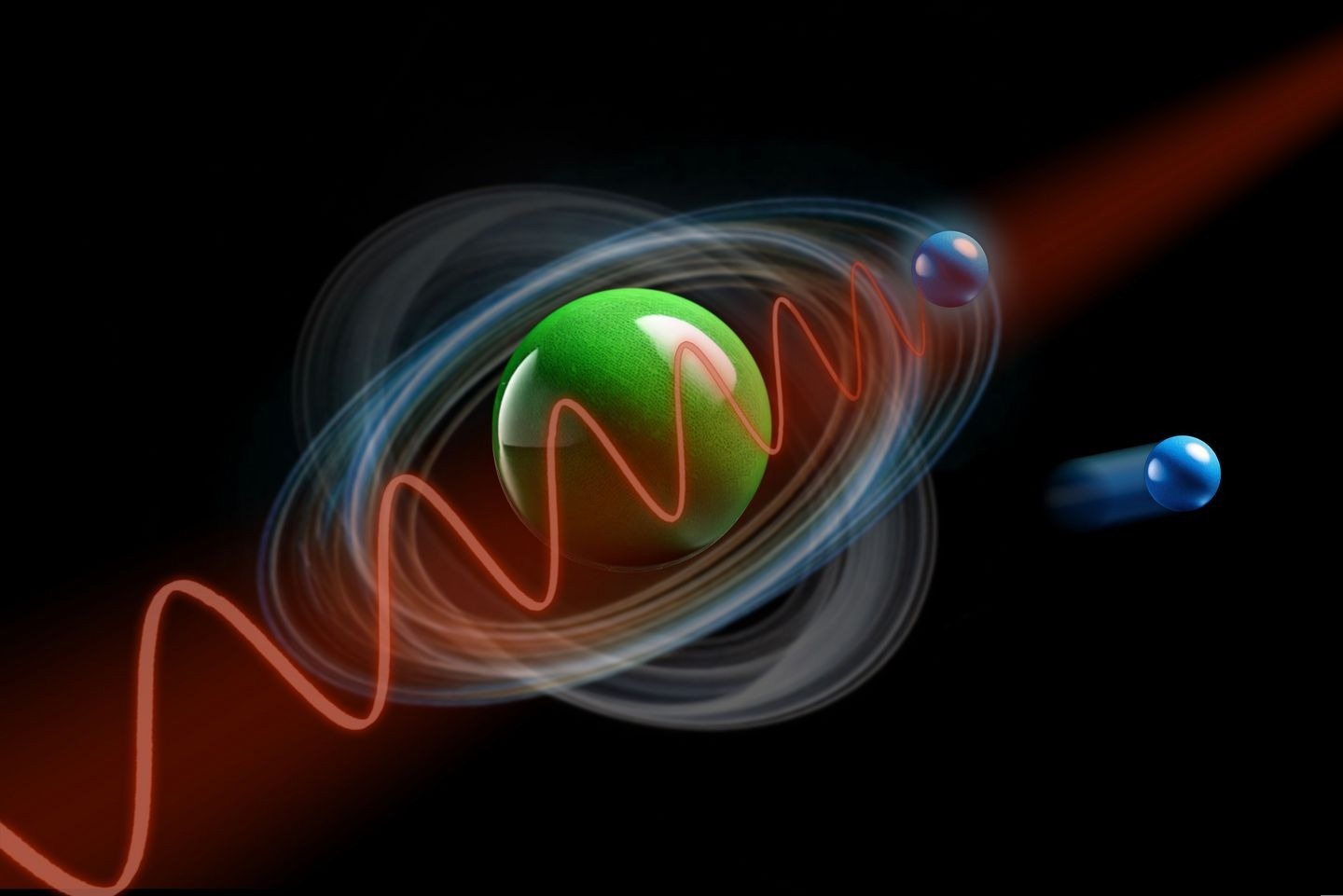TU Wien (Vienna), in collaboration with research teams from China, has developed computer simulations that can replicate ultrafast processes in a study published in Physical Review Letters.

An atom is hit by a laser pulse. One electron is ripped out of the atom, another electron is shifted into a state with higher energy. Image Credit: TU Wien
Quantum theory describes events that occur over extremely short time scales. Previously, such events were considered momentary or ‘instantaneous. An electron orbits an atom's nucleus before being abruptly ripped out by a flash of light. Two particles collide before becoming "quantum entangled."
Nowadays, the temporal evolution of such nearly instantaneous effects can be studied.
If two particles are quantum entangled, it is pointless to describe them separately. Even if the state of this two-particle system can be completely understood, one cannot make a definitive statement about the state of a single particle.
You could say that the particles have no individual properties, they only have common properties. From a mathematical point of view, they belong firmly together, even if they are in two completely different places.
Joachim Burgdörfer, Professor, Institute of Theoretical Physics, TU Wien
Scientists conducting experiments with entangled quantum particles, such as those attempting to use quantum entanglement for quantum computers or quantum cryptography, typically care about maintaining this quantum entanglement for as long as possible.
We, on the other hand, are interested in something else – in finding out how this entanglement develops in the first place and which physical effects play a role on extremely short time scales.
Iva Březinová, Study Author and Professor, TU Wien
The scientists examined atoms struck by a high-frequency, intense laser pulse. An electron was ripped from the atom and sent flying. A second atom's electron might also be impacted if the radiation is potent enough. It might be moved into a more energetic state and then follow a different orbit around the atomic nucleus.
One electron, therefore, leaves the atom with an unknown energy after the laser pulse, while the other flies away.
Burgdörfer added, “We can show that these two electrons are now quantum entangled. You can only analyze them together – and you can perform a measurement on one of the electrons and learn something about the other electron at the same time.”
Using a suitable measurement protocol that combines two different laser beams, the research team has now demonstrated that it is possible to create a situation where the state of the electron that remains behind is related to the “birth time” of the electron flying away, or the moment it left the atom. Quantum entanglement exists between these two attributes.
This means that the birth time of the electron that flies away is not known in principle. You could say that the electron itself doesn't know when it left the atom. It is in a quantum-physical superposition of different states. It has left the atom at both an earlier and a later point in time.
Joachim Burgdörfer, Professor, Institute of Theoretical Physics, TU Wien
It is impossible to determine what time it “really” was because quantum physics does not provide an “actual” answer to this query.
However, the response is connected to the likewise unknown state of the electron that is still present in the atom in a quantum-physical way: The free electron that flew away most likely had a later “birth time” (on average about 232 attoseconds) if the remaining electron was in a lower energy state; if the remaining electron was in a higher energy state, the electron that flew away was more likely to have been torn out early.
Given that an attosecond is a billionth of a billionth of a second, this is a remarkably brief amount of time.
“However, these differences can not only be calculated but also measured in experiments. We are already in talks with research teams who want to prove such ultrafast entanglements,” Burgdörfer stated.
The study demonstrates that simply labeling quantum effects as "instantaneous" is insufficient: significant correlations emerge only when the ultra-short time scales of these effects are resolved.
Březinová concluded, “The electron doesn't just jump out of the atom. It is a wave that spills out of the atom, so to speak – and that takes a certain amount of time. It is precisely during this phase that the entanglement occurs, the effect of which can then be precisely measured later by observing the two electrons.”
Journal Reference:
Jiang, W.-C. et. al. (2024) Time Delays as Attosecond Probe of Interelectronic Coherence and Entanglement. Physical Review Letters. doi.org/10.1103/PhysRevLett.133.163201